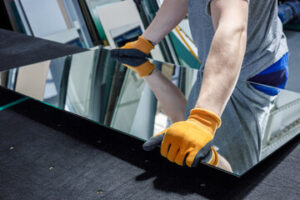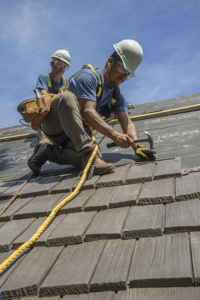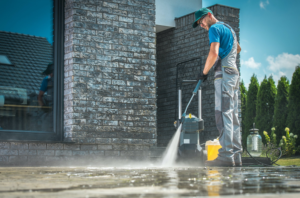Atlanta Glass And Mirror are important products that have been around for thousands of years. They have been used for numerous purposes, such as art, architecture, and fashion. Glass allows us to see through objects, while mirrors allow people to reflect on them.

Recent work suggests that human perception of mirror and glass may rely on simple image features such as pixel histograms. We tested whether these features predict perceptual mirror and glass judgments.
The cost of glass and mirror depends on the materials used, the size and thickness of the mirror, and any customizations. In general, a basic 36-inch square mirror with a seamed edge costs $80 to $100. Customized mirrors require additional time and precision, and they may be more expensive. Some examples of common customizations include notches, cutouts, angle cuts, and beveling.
Adding mirrors to interior spaces can create an open feel and visually expand the room. They can also help reduce the need for artificial lighting, reducing electricity bills. It is important to remember that mirrors should be cleaned regularly to avoid spotting and fogging.
Another benefit of mirrors is that they are a durable and lightweight material. This makes them suitable for use in high-traffic areas and commercial buildings. They are also more affordable than other types of decorative material. In addition, they are easy to install. It is essential to choose the right mirror for your space and consult with a professional before making a purchase.
Choosing the right mirror can make a big difference in your home or office. It is also important to get quotes from several companies and ask for references. This will help you select a company with the best price and quality. You should also look for a company that is licensed, insured, and bonded.
Mirrored glass is a versatile and attractive decorative material that adds drama and flair to any space. It can be customized to fit any theme and reflects light, which brightens rooms. It is available in a variety of colors and can be etched to create unique designs.
Glass and mirror are beautiful additions to any home or business, but they can be costly if not maintained properly. Regular cleaning with a soft cloth will keep them looking like new and avoid streaks and blemishes. Glass and mirror are also a good choice for kitchens and bathrooms because they reflect natural light, which helps to brighten and illuminate the space. These benefits can save you money on utility bills and lower your maintenance expenses.
Durability
A durable mirror can be a great addition to any room. It can help to open up spaces and make them appear larger, while also reflecting natural light into dark or confined areas. It can add a touch of luxury to any space, and it is available in a wide range of colors and shapes. It can even be customized with patterns or textures to create a unique design that matches the overall theme of the room. However, it is important to choose a high-quality mirror that has been treated for durability and corrosion resistance. This is especially important for commercial use, as it can help to prevent damage and keep the glass looking like new for a longer period of time.
Choosing the right mirror for your home or office depends on several factors, including its purity and reflectiveness. The purity of the glass is determined by the type of raw materials used and the manufacturing process. It can be difficult to spot impurities in a glass product unless you have specialized equipment. If you are unsure about the purity of your glass, consult with a reliable glazier for more information.
Glass mirrors are very durable and long-lasting. They can withstand a variety of stressors, and are more resistant to corrosion than metals. They are also a more environmentally friendly option. However, they require a little more upkeep than other types of mirrors. Cleaning them regularly with a special cleaner is a good idea to ensure they stay sparkling clean.
If you are interested in a more permanent solution, there are many benefits to using a plastic mirror. Plastic mirror sheets are half as heavy as glass, which makes them easier to handle and install. They are also less likely to break than glass, which means they can be installed in a wide variety of locations without the need for additional support.
When buying mirrors, consider your budget and how they will be used. Are you going to need a large one-way mirror? Will it need to be glued or secured to the wall? Are you planning on installing it in a bathroom or shower? If so, a safety backing is a must. This adhesive film adheres to the back of the mirror and helps to prevent glass scattering if it breaks. It can also protect the surface of the mirror from scratching.
Appearance
Whether you’re looking to brighten up your home with a new mirror glass window or want to make a statement with a beveled polished edge vanity, it’s important to choose a high-quality piece of glass. These pieces of glass are available in a wide variety of shapes, sizes and styles that allow you to easily integrate it into any room. Additionally, the reflected light from the mirror glass will help illuminate the space and create a more welcoming atmosphere.
Glass and mirrors are made by coating the surface of a sheet of clear glass with a thin layer of silver, known as silvering. This process is done using various techniques, including electroplating and “wet” chemical deposition. The resulting front-coated metal mirror has a reflectivity of 90-95%. This is much higher than regular glass, which has a reflectivity of around 40%.
Besides providing a reflective surface, the silvering on a mirror is also designed to protect the glass from stains and other damage. However, the silvering can eventually deteriorate over time. When this happens, dark spots and streaks may appear on the edges of the mirror. This is a common problem, but it can be avoided by carefully cleaning your mirrors and keeping them out of the rain or dampness.
When you look at an image in a mirror, you see a distorted version of the object. This is because the light rays bounce off of the mirror in different directions, depending on the direction and distance from which they originate. This is why the reflection of a person in a mirror looks half as big as their actual face.
Mirrors are used to inspect objects, such as during personal grooming or for decoration. They are also an integral component of modern automobiles and building safety systems, and they can be found in a wide variety of other devices, including cameras and telescopes.
Mirrors are also a popular design-theme in architecture, with many late modern and post-modernist high-rise buildings featuring glass and mirrors. This trend has been fueled by advances in glass fabrication and production, as well as a desire to promote openness and transparency in urban spaces.
Safety
When it comes to mirrors and glassware, safety is paramount. Proper handling techniques can reduce the risk of injury. These include wearing protective eyewear and clothing. In addition, it is important to keep the work area clean and free of potential hazards. Taking the proper precautions when cleaning up broken glass will ensure that no shards are left behind. Proper disposal of the broken pieces will also minimize risk to those who handle the garbage/recycling collection process.
When handling mirrors, it is important to use a tool that will not scratch the surface. Many companies offer special tools designed specifically for the job. These tools are usually made of stainless steel, which will not scratch the mirror. Using these tools will help to prevent damage to the surface of the mirror, as well as protect your hands.
If the mirror is in an area where it may be subject to vandalism, it is best to use a toughened glass product, such as a laminated safety mirror. These products have a plastic or polycarbonate coating that helps to protect the surface. They are also more resistant to impact. If you have a mirror in a public area, you should consider installing a security system to deter criminal activity.
Keeping the glass and mirror dry is another crucial factor in maintaining its condition. Excess moisture can lead to corrosion issues, which are observed as black spots on the edges of the mirror. The issue can affect the appearance of the mirror, and it can even deteriorate the image quality. To minimise this issue, a waterproof adhesive is recommended for the installation of the mirror.
It is also a good idea to avoid holding or carrying the glass/mirror by its corners. This can lead to severe injuries if the mirror breaks. It is also a good idea to place the mirrors in an enclosed area, such as a storage room or garage. The space should be kept cool and ventilated to avoid humidity. This will also help to prevent expansion and contraction of the glass, which can cause it to break.





